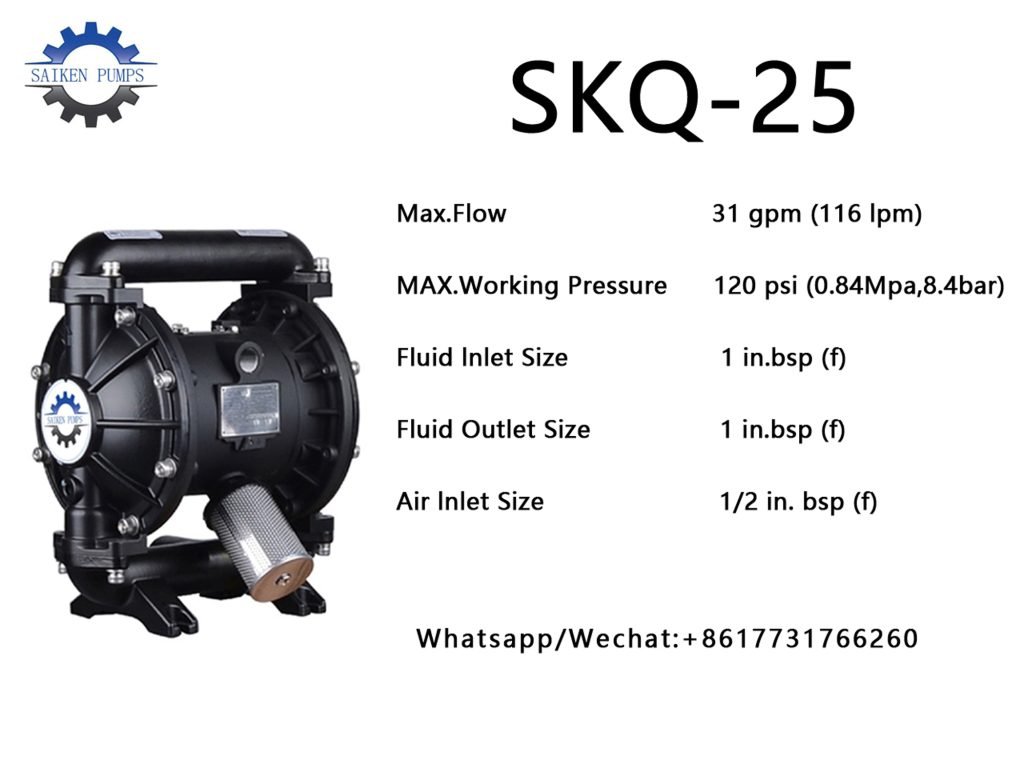
China Pumping Solutions Leader
Valve body type is the most important link in the selection of diaphragm pump. There are many types of diaphragm pump valve bodies. (1) The spool shape structure is mainly considered according to the selected flow characteristics and unbalance force. (2) Wear resistance: when the fluid medium is a suspension containing a high concentration of wear particles. (3) Corrosion resistance: Because the medium is corrosive, in the case of meeting the adjustment function, try to choose a simple valve structure. (4) the temperature and pressure of the medium: when the temperature and pressure of the medium are high and the change is large, the valve core and the material of the valve seat should be selected with small changes in temperature and pressure. 2, diaphragm pump selection (1) consideration of the output force of the actuator, no matter what type, the output force is used to overcome the load of the effective (mainly refers to the unbalanced force and unbalanced torque plus friction, sealing force, gravity and other related forces).
The working principle of diaphragm pump, diaphragm pump is a more special form of positive displacement pump. It relies on a diaphragm to push back and forth to change the volume of the studio to inhale and expel liquid. Pneumatic diaphragm pump is mainly composed of two parts: transmission part and diaphragm cylinder head. The transmission part is a driving mechanism that drives the diaphragm to and fro, and its transmission forms are mechanical transmission, hydraulic transmission and pneumatic transmission, etc., among which hydraulic transmission is more widely used. The working part of the diaphragm pump is mainly composed of the crank connecting rod mechanism, the plunger, the cylinder, the diaphragm, the pump body, the suction valve and the discharge valve, etc. Among them, the driving mechanism composed of the crankshaft connecting rod, the plunger and the cylinder is very similar to the reciprocating piston pump. When the diaphragm pump works, the crank connecting rod mechanism is driven by the motor to drive the plunger to reciprocate, and the movement of the plunger is transmitted to the diaphragm through the working liquid (generally oil) in the cylinder, so that the diaphragm is agitated back and forth. The cylinder head part of the pneumatic diaphragm pump is mainly divided by a diaphragm plate to transport the liquid and the working liquid, when the diaphragm plate moves to one side of the transmission mechanism, the pump cylinder is working for negative pressure and suction liquid, when the diaphragm plate moves to the other side, the liquid is discharged. The liquid to be transported in the pump cylinder is separated by the diaphragm and the working liquid, and only contacts the pump cylinder, suction valve, discharge valve and the inner side of the diaphragm, but does not contact the plunger and the sealing device, which makes the plunger and other important parts completely work in the oil medium and are in good working condition. The diaphragm should have good flexibility and better corrosion resistance, usually made of polytetrafluoroethylene, rubber and other materials. The pot shaped parts with mesh holes on both sides of the diaphragm are set up to prevent excessive deformation of the diaphragm locally, which is generally called the diaphragm limiter. The sealing performance of the pneumatic diaphragm pump is good, and it can be easily achieved without leakage operation, which can be used to transport corrosive liquids such as acid, alkali, salt and high viscosity liquids.
A diaphragm is arranged in each of the two symmetrical working chambers of the diaphragm pump, which is connected by a central connecting rod. The compressed air enters the distribution valve from the intake port of the pump, and the compressed air is introduced into one chamber through the distribution mechanism to push the diaphragm movement in the chamber, while the gas is discharged in the other chamber. Once the end of the stroke is reached, the valve mechanism automatically introduces compressed air into another working chamber, pushing the diaphragm to move in the opposite direction, so that the two diaphragms move continuously and synchronously. The compressed air enters the distribution valve, so that the diaphragm moves to the right, then the suction force of the chamber makes the medium flow into the inlet, pushing the ball valve into the chamber, and the ball valve is locked due to inhalation; The medium in the chamber is squeezed, the ball valve is opened to flow out from the outlet, and the ball valve is closed to prevent flow, so that the medium is constantly sucked from the entrance and discharged from the exit.
